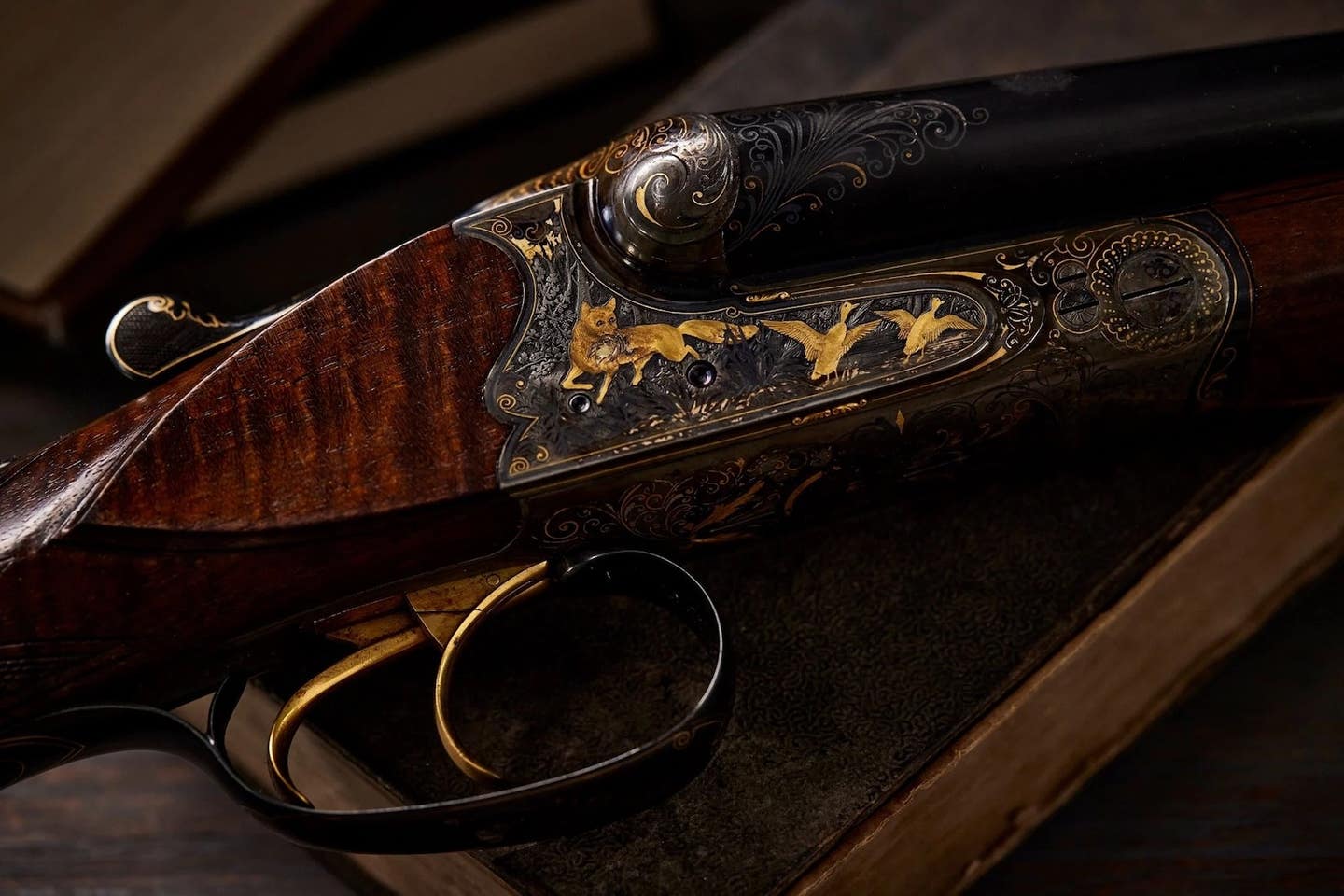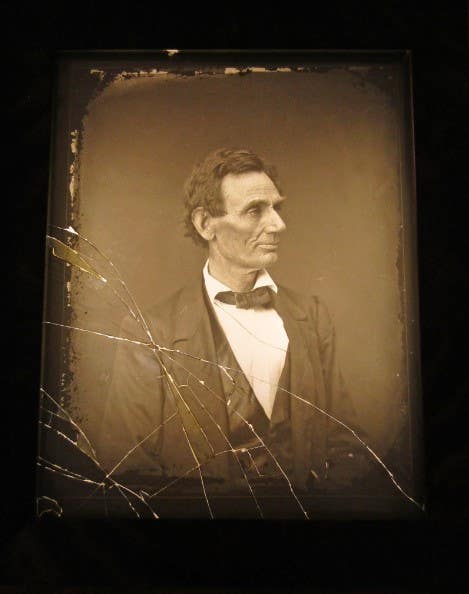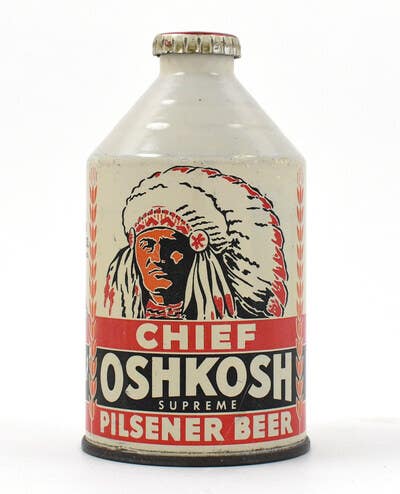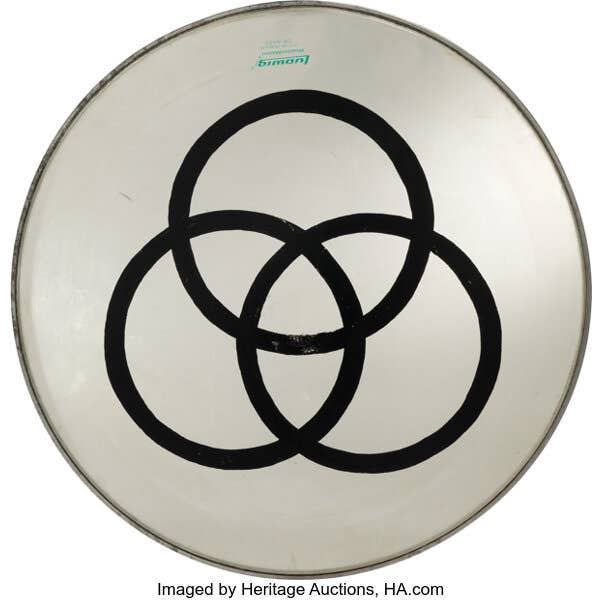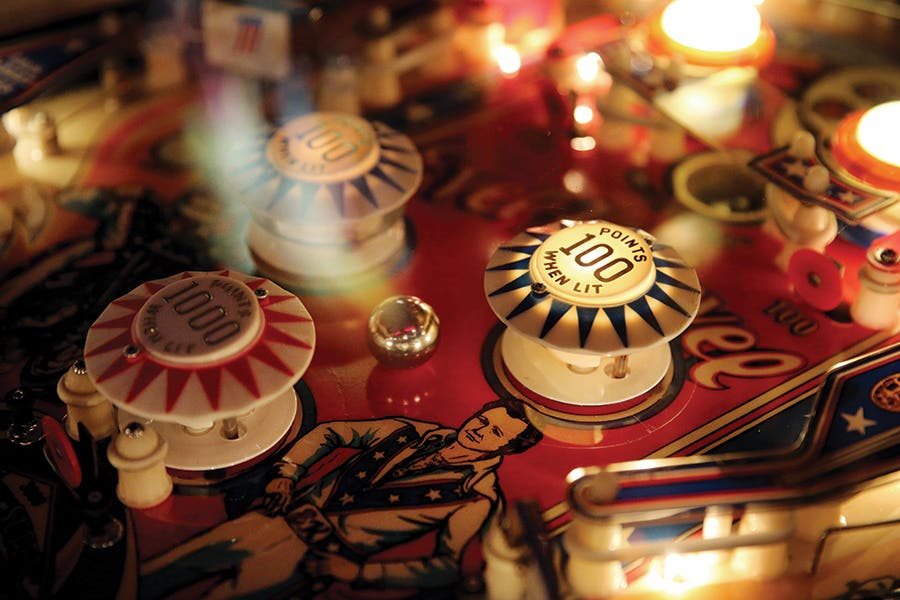Cast iron cookware auction draws bidders from afar
For the enthusiast and collector, a large vintage and antique cast iron cookware auction is akin to a chocoholic diving into a pool of dark chocolate.
Article and all photos by Mary Theisen. (Copyright 2019, Mary Theisen. All rights reserved.)
For the enthusiast and collector, a large vintage and antique cast iron cookware auction is akin to a chocoholic diving into a pool of dark chocolate.
I’ve been to a number of these auctions over the past 10 years, but I still get glassy-eyed and start breathing faster when I walk into the room and see all of those gorgeous pieces of iron on display.
My resolve to buy just one particular piece wilts as I examine the splendid collection before me.
A large auction of vintage cast iron cookware is typically not just mishmash or “as found” cast iron. If it is an auction of solely cast iron, it is usually pieces obtained from a collector or multiple collectors’ collection.
The collection may be from an estate. It may be a collector downsizing or selling off their collection. Sometimes the amount of iron auctioned off is so large that the auction is spread over two or three days.
Iron at these “niche” auctions is typically in beautiful condition. This makes sense; after all, they are pieces that were treasured and admired by someone who knew their history and value. The auctions often include some extraordinary and rare pieces. A wide selection of different manufacturers and types of cookware are represented.
February 23, 2019 Auction
The auction I attended on February 23, 2019, was an excellent example of such an assortment. Dinky’s Auction Service [http://dinkysauction.com/] conducted the sale at Dinky’s Auction Center in Montgomery, Indiana. The pieces auctioned were from several different collections, as well as individual pieces that had been consigned.
Three different groupings of iron were sold that weekend. The first was a grouping of about 125 “less than perfect” pieces of iron, and/or common pieces considered to be less collectible. Those pieces were auctioned off the evening before the main sale as part of Dinky’s “regular” Friday night auction.
The second grouping was the primary auction of 500 pieces on Saturday, February 23. This auction was also available via auctionzip.com to online bidders.1 [See author's notes section.] Catalogs were posted online at auctionzip.com. Hard copies were sent out in advance of the auction to those who had requested them.
The final grouping was a table filled with crusty rusty “as found” pieces that were sold as a lot after the Saturday auction.
When I arrived at about 7 a.m. on Saturday to preview the pieces before the auction and to take photos, the building was quiet. As it grew closer to the start time of 9 a.m., more and more people filed in and began examining the tables of iron. I saw collectors I know carefully studying some of the higher-value pieces.
Sellers looking to buy inventory were perusing the pieces; some were carrying a flat edge ruler so that they could see whether the pan was warped. I also saw and greeted some fellow members of the Griswold & Cast Iron Cookware Association.2 And then, of course, there were looky-loos and people who just wanted a piece or two of cookware for their kitchen.
Cast iron up for auction
All categories of cast iron cookware were included in the sale, including:
- Skillets of all sizes
- Dutch ovens, oval roasters, and trivets of all sizes
- Lids, glorious lids
- Griddles galore
- Waffle irons
- Cake, gem, and muffin pans
- Bread pans
- Broilers
- Stoves, including miniatures
- Bowls and kettles
- Ovens, including miniatures
- Varied utensils and other miscellaneous.
Three men worked as auctioneers: Levi Raber, Jesse Raber, and Calvin Raber. Bids came fast and hard as we listened and grew accustomed to the chant of each auctioneer. As the auctioneers worked, other workers carefully watched the crowd, calling out as people raised their bid cards. A woman worked nearby at her computer, monitoring online bidding and making sure that the online bids were counted. It was very intense; particularly when some of the big-ticket items came up.
Dinky’s Auction Service worked non-stop until a bit after 2 p.m. to auction off the 500 pieces sold. Prices were about as I expected. There were some good buys, and some rare items brought high prices.
People always hope that they will find a magical piece of iron in grandma’s cupboard that will yield a pot of gold. So without further ado, here are the top prices realized at the auction. Go check your grandma’s pantry.
Top prices realized for cast iron cookware
With the two exceptions noted below, all of the pieces that sold for $400 or more were Griswold-made products.
- $2,700: Griswold no. 13 Dutch oven p/n 2635, with low dome lid p/n3 2637.
- $2,400: Griswold no. 12 Dutch oven p/n 2634, with low dome lid p/n 2636.
- $2,200: Griswold large block logo4 EPU5 no. 13 skillet p/n 720.6
- $2,000: Griswold large block logo EPU no. 2 skillet with heat ring,7 p/n 703.
- $1,400: Griswold loaf pan lid, p/n 859.
- $1,000: Griswold no. 3 low dome8 fully-marked9 skillet lid,
p/n 463. - $950: Griswold large block logo EPU no. 20 hotel skillet,
p/n 728. - $900: Griswold no. 12 Dutch oven trivet, p/n 210.
- $800: Griswold “All in One Dinner Skillet,” p/n 1008.
- $800: Griswold cast iron indestructible mailbox (ironically,
the lid has a repair) p/n 71, lid p/n 72. - $650: Griswold slant “ERIE” no. 2 skillet, p/n 703.
- $600: Favorite Piqua Ware skillet broiler.
- $575: Griswold “Iron Mountain” line no. 14 skillet, p/n 1085.
- $550: Griswold no. 8 French waffle iron with the base.
- $550: Griswold no. 10 flat bottom kettle lid, p/n 883.
- $525: Griswold no. 12 hotel waffle iron.
- $500: Griswold slant logo “ERIE” no. 2 skillet p/n 703.
- $500: Griswold no. 11 low dome fully-marked skillet lid,
p/n 471. - $500: Griswold loaf pan, p/n 877.
- $475: Griswold no. 5 oval roaster p/n 645 with lid, p/n 646.
- $450: Griswold no. 5 oval roaster trivet.
- $450: Griswold low dome no. 5 fully-marked skillet lid,
p/n 465.
More top auction prices for cast iron cookware
- $450: Griswold large block logo EPU no. 11 skillet with heat ring, p/n 717.
- $450: Martin Stove & Range no. 8 cabin stove.
- $425: Griswold Dutch oven no. 6 p/n 2605 and lid, p/n 2606.
- $425: Griswold no. 15 oval fish skillet, p/n 1013.10
- $400: Griswold no. 12 low dome fully-marked skillet lid,
p/n 472. - $400: Griswold no. 14 large block logo EPU skillet in beautiful, like-new, condition.
- $400: Griswold slant logo no. 3 oval roaster p/n 2627 with lid, p/n 2628.
- $400: Griswold no. 9 oval roaster p/n 649 with lid, p/n 650.
- $400: Griswold no. 2 large block logo EPU smooth bottom skillet, p/n 703.
- $400: Griswold no. 14 large block logo EPU skillet, p/n 718.
- $400: Griswold Santa mold, front p/n 897, back p/n 898.
- $400: Griswold no. 11 Dutch oven p/n 836 with lid p/n 2553.
- $400: Griswold mortar and pestle.
- $350: Griswold slant logo no. 5 oval roaster p/n 2629, lid
p/n 2630.
Are you interested in checking out one of these cast iron auctions for yourself?
Dinky’s next cast iron auction will be held at Dinky’s Auction Center in Montgomery, Indiana on August 24, 2019. I had the chance to see two beautiful sets that will be part of that auction: a full set of Wapak Cast Iron “Indian Head” skillets, and a set of Griswold Flat Bottom Kettles with usually-impossible-to-find lids and trivets.
Email dinkysauctioncenter@yahoo.com to be placed on the list for the auction catalog.
Author's Notes
- There are special considerations that come into play when bidding online at an iron auction. Buyer’s premiums and large shipping expenses are just two of them. I wrote more extensively about bidding online and in person in a blog post which you can find here: https://vintagecastironllc.com/2018/05/13/the-lure-of-the-large-vintage-cast-iron-auction-and-twelve-handy-dandy-tips/
- The Griswold & Cast Iron Cookware Association is one of the two national collector’s groups. You can find more information about the group at their website: gcica.org.
- “P/N” refers to the pattern number of the piece. Griswold pieces are marked with pattern numbers.
- The words “large block logo” refers to the block lettering within the Griswold “cross” pattern. It is distinguished from the “slant” logo, which is italicized lettering.
- “EPU” refers to the words “Erie, PA, USA” beneath the Griswold trademark. The word “ERIE” alone may also be located beneath the Griswold trademark; these pieces are older.
- I have uploaded a video of the auction for the number 13 Griswold skillet, as well as a few of the other sales, to my YouTube channel. You can find them here: http://www.youtube.com/c/VintageCastIronLLC
- The “heat ring” is a raised area that encircles the outer edge (or slightly inset from the edge) of the bottom of the pan. If the heat ring is not present, it may be referred to as a “smooth bottom.”
- Low dome is distinguished from “high dome.” The high dome lid is deeper than the low dome.
- “Fully-marked” refers to the raised lettering on the top of the cover, i.e., “GRISWOLD SELF-BASTING SKILLET COVER.”
- I was surprised that the Griswold number 13 oval fish skillet sold for $325 – less than the $425 that the number 15 brought. The number 13 is less common.
Mary Theisen is a vintage cast iron cookware enthusiast and blogger. Find her stories at vintagecastironllc.com.



